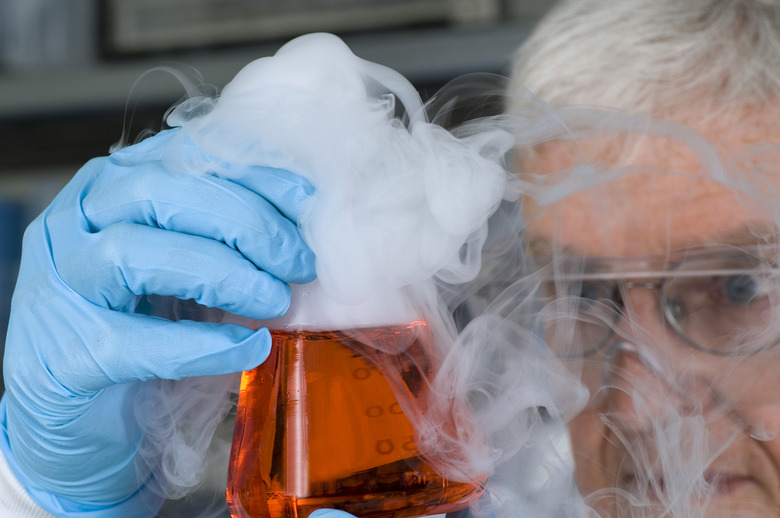What Are Five Properties Of Gases?
Gases were an enigma to early scientists who were baffled by their freedom of movement and apparent weightlessness compared to liquids and solids. In fact, they did not determine that gases constituted a state of matter until the 17th century. Upon closer study, they began observing consistent properties that defined gases. The single distinction that initially baffled scientists — that of gas particles having more space to move freely than particles of solids or liquids — informs each of the properties that all gases have in common.
Low Density
Low Density
Gases contain scattered molecules that are dispersed across a given volume and are therefore less dense than in their solid or liquid states. Their low density gives gases fluidity, which allows gas particles to move rapidly and randomly past one another, expanding or contracting with no fixed positioning. The average distances between the molecules are large enough that interactions between molecules don't interfere with their motion.
Indefinite Shape or Volume
Indefinite Shape or Volume
Gases have no definite shape or volume.The random movement of gas molecules allows them to expand or contract to assume the volume of the container holding them. Therefore, a gas's volume refers to the space of the container in which its molecules have range to move. This property results in gases occupying more space than they would in their liquid or solid state. Gases also contract and expand by predictable amounts depending upon changes in temperature and pressure.
Compressibility and Expandability
Compressibility and Expandability
The low density of gases makes them compressible since their molecules can be positioned far apart from one another. This allows them to move freely to fit into the gaps of space between them. Just as gases are compressible, they are also expandable. The freedom of gas molecules causes them to take the shape of any container in which they are placed, filling the container's volume.
Diffusivity
Diffusivity
Given the large amounts of space between gas molecules, two or more gases can mix quickly and easily with one another to form a homogeneous mixture. This process is called diffusion.
Pressure
Pressure
Gas molecules are in constant motion. They exert pressure, or force per unit area, on the interior surface of their container. The pressure varies according to the amount of gas confined to a given container's volume, the temperature and the pressure.
Cite This Article
MLA
Johnson, W.D.. "What Are Five Properties Of Gases?" sciencing.com, https://www.sciencing.com/five-properties-gas-8273866/. 13 March 2018.
APA
Johnson, W.D.. (2018, March 13). What Are Five Properties Of Gases?. sciencing.com. Retrieved from https://www.sciencing.com/five-properties-gas-8273866/
Chicago
Johnson, W.D.. What Are Five Properties Of Gases? last modified March 24, 2022. https://www.sciencing.com/five-properties-gas-8273866/
